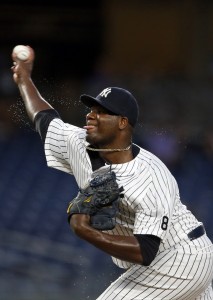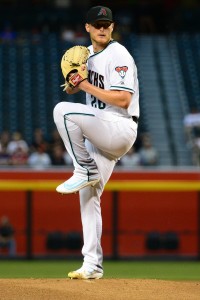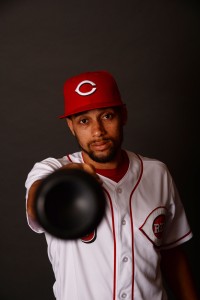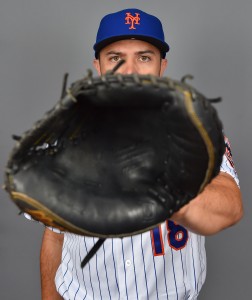At this time two years ago, Tyler O’Neill was viewed as a future cornerstone of the Cardinals outfield. O’Neill had shown flashes of his top-100 prospect potential over his first three MLB seasons, but it seemingly all came together for the Canadian in his age-26 season, when he hit .286/.352/.560 with 34 homers over 537 plate appearances and delivered Gold Glove-winning defense in left field. This all-around performance translated to a 5.5 fWAR that topped by only 13 players in the sport, and O’Neill finished eighth in NL MVP voting.
Unsurprisingly, O’Neill and the Cardinals had some talks about a multi-year contract extension during the 2021-22 offseason, though it wasn’t known if the two sides floated a deal to cover just O’Neill’s arbitration years or beyond. (The Cards subsequently won an arb hearing against O’Neill that resulted in a $3.4MM salary for the outfielder in 2022, rather than his desired $4.15MM figure.) Given how the next two seasons played out for O’Neill, St. Louis might have caught a break by not agreeing to a long-term deal, though it’s safe to say that neither side was particularly satisfied with the outfielder’s results during the 2022-23 seasons.
O’Neill has hit only .229/.310/.397 with 23 home runs over 649 PA since Opening Day 2022, good for a slightly below-average 98 wRC+. The key statistic there might be the plate appearances, or lack thereof — O’Neill played in just 168 of a possible 324 games due to several injuries. A hip impingement and a hamstring strain limited him to 96 games in 2022, and then a lower back sprain and a foot sprain led to more injured list time in 2023 and only 72 appearances.
Injuries also hampered O’Neill prior to 2021, thus making him a tricky player to properly evaluate. Does that career year serve as an example of what O’Neill can do if he can ever stay healthy, or was even that giant 2021 campaign perhaps something of an outlier even beyond O’Neill’s lack of time on the IL? A hefty .366 BABIP puts something of an asterisk on O’Neill’s 2021 numbers, even allowing for the fact that his speed and baserunning ability helped him naturally turn a few extra grounders into base hits. His walk rate was also well below the league average in 2021, though curiously, O’Neill posted much more solid walk numbers in 2022-23, as well as the 2020 season.
The number that has stayed consistent, unfortunately for O’Neill, is his strikeout rate. Since making his MLB debut in 2018, O’Neill’s 30% strikeout rate ranks seventh among all batters with at least 1600 PA. While his K% has gotten better in each of the last two seasons, all of this swing-and-miss in O’Neill’s approach has curbed his effectiveness at the plate and made him something of a one-dimensional hitter.
It probably also hasn’t helped that O’Neill spent much of the 2023 season hearing his name in trade rumors. Between the Cardinals’ outfield depth and his down year in 2022, O’Neill suddenly seemed to become expendable, even if St. Louis was naturally still putting a significant asking price on his services. It isn’t known what offers the Cards might’ve received for O’Neill at the time or what trades might have been floated or seriously discussed, yet in 20-20 hindsight, St. Louis might’ve been better served in moving O’Neill while his trade value was a little higher.
The outfielder’s rough 2023 season only diminished that value, and the year got off to an immediate awkward start when O’Neill was benched for a game for what manager Oliver Marmol felt was a lack of baserunning effort the previous night. That situation seemed like a harbinger for the end of O’Neill’s time with the organization, yet he Cardinals ended up retaining O’Neill at the trade deadline even through the struggling club made some other sell-off moves.
A trade didn’t materialize until December, when the Red Sox landed O’Neill for pitching prospects Nick Robertson and Victor Santos. Baseball America ranks Robertson as the 25th-best prospect in the St. Louis farm system and he made his MLB debut in 2023 with the Dodgers, yet the trade return has to be considered a bit of a disappointment for the Cards considering what the return might have been for O’Neill even last offseason. From Boston’s perspective, of course, the deal could be seen as an intriguing buy-low situation. The Royals and (O’Neill’s former team) Mariners were two of the other teams publicly linked to O’Neill’s trade market, and it’s safe to assume that several other teams checked in with the St. Louis front office.
Health is obviously the biggest x-factor for O’Neill going forward, yet Fenway Park is a pretty nice landing spot for a player looking to regain his hitting stroke. It’s easy to imagine O’Neill suddenly launching a few homers over the Green Monster, though that same wall will also provide an interesting challenge to O’Neill in his regular role as the new Sox left fielder. After winning Gold Gloves in both 2020 and 2021, O’Neill’s defensive numbers were much closer to average over the last two seasons, so he’ll also be looking for a rebound in the field as well as at the plate.
O’Neill turns 29 in June, and he’ll be a free agent following the 2024 season. He’ll have all the opportunity in the world with a Red Sox team that seems to be something in a state of flux between partially rebuilding and trying to legitimately contend, and it can be argued that buying low on a recent MVP candidate can be slotted into either direction. Another year of struggles could limit O’Neill’s ceiling to platoon roles and one-year deals going forward, yet if he can avoid the IL and show anything close to his 2021 season offensively or defensively, a nice multi-year contract could be in offing next winter.





